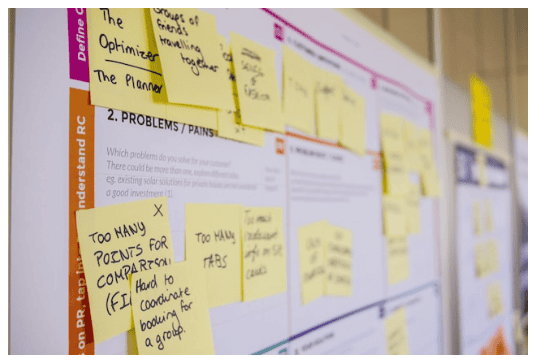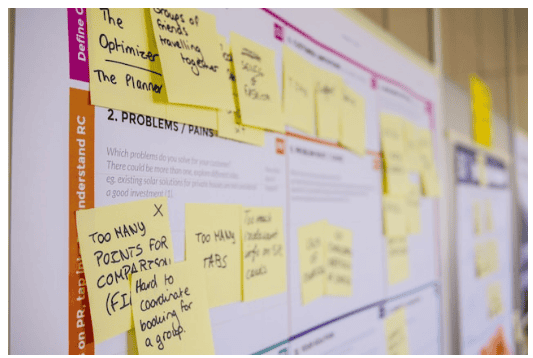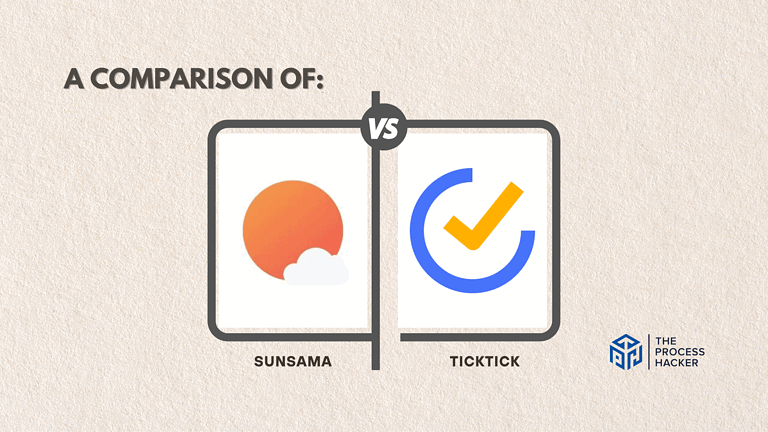How to Analyze Issues Using Kepner Tregoe Problem Analysis
As a small business owner, you know the challenges of running your own company all too well.
From employee conflicts to supply chain disruptions, countless issues can arise and threaten the success of your business. As a high performer striving for excellence in every aspect of your life, you understand the importance of effectively addressing and overcoming these obstacles.
That’s where Kepner Tregoe Problem Analysis comes in—a powerful problem-solving approach designed by Charles Kepner and Benjamin Tregoe to help individuals and businesses analyze complex issues and make informed decisions.
In this blog post, we’ll explore what Kepner Tregoe Problem Analysis is, how it works, and why it should be an essential tool in every small business owner’s arsenal.
Get ready to take your problem-solving skills to new heights!
What is the Kepner Tregoe Problem Analysis?
Kepner Tregoe Problem Analysis is a structured approach to dissecting complex issues and pinpointing their root causes. It’s a versatile tool used across various industries and scenarios, from troubleshooting technical glitches to identifying bottlenecks in business processes.
This methodology is valuable for anyone seeking to enhance their problem-solving skills and streamline decision-making.
Why Should You Use Kepner Tregoe Problem Analysis
Let’s be honest: troubleshooting complex issues can feel like walking in a maze. Without a clear path, you’re prone to wasting time, resources, and energy chasing dead ends. That’s where KT Problem Analysis steps in. It equips you with a systematic framework to:
- Pinpoint the root cause: No more band-aid solutions; get to the heart of the matter.
- Make informed decisions: Base your actions on solid evidence, not guesswork.
- Improve efficiency: Streamline your problem-solving process and save valuable time.
- Enhance communication: Articulate issues clearly and collaborate effectively.
- Prevent future problems: Identify patterns and implement preventive measures.
By mastering this method, you’ll not only solve problems but also become a proactive problem-preventer. Kepner Tregoe Problem Analysis is your compass in the chaos, guiding you toward clarity and resolution.
How to Use Kepner Tregoe Problem Analysis
The Kepner Tregoe Problem Analysis stands out for its methodical framework. It’s not about quick fixes but delving into the root cause of an issue for lasting solutions. We’ll go through distinct phases, each designed to guide you systematically through the problem-solving process.
In the following sections, we’ll break down these phases, providing a comprehensive guide to effectively implementing the Kepner Tregoe method. This detailed walkthrough will equip you with a powerful tool to tackle any challenge with confidence and precision and acquire new skills.
#1) Describe Problem
The initial step involves getting crystal clear on the issue at hand. This isn’t the time for vague complaints or assumptions. Instead, meticulously document the problem’s specifics.
State the Problem
List the object and the deviation. What object (or group of objects) has the deviation? What deviation does it have? What tells us a deviation exists? (senses, measures)
Factually Describe the Problem in Detail
Describe as completely and factually as possible. It’s essential to gather all relevant facts without assumptions or biases. This factual foundation is critical in identifying not just what is wrong but why it’s wrong, leading to more effective solutions.
By breaking down the problem in this detailed way, you ensure that every potential factor is considered, leading to a more thorough potential problem analysis and better outcomes.
The Kepner Tregoe matrix isn’t just about finding a solution; it’s about finding the right solution to prevent recurring issues. This approach can save you time, resources, and headaches in the long run.
#2) Identify Possible Root Causes
With a sharp problem statement in hand, it’s time to play detective. Brainstorm all possible factors that could be contributing to the issue. Don’t hold back – consider internal and external influences, past events, and even seemingly unrelated elements.
Identify Possible Root Causes Using Your Knowledge and Experience
- Explain how the cause creates the deviation. Use the object + deviation format to structure your analysis. Ask yourself, what could have caused this deviation? This approach helps you focus on the specifics of each potential cause and its direct impact on the issue.
Identify Possible Root Causes Using Distinctions and Changes
- Record data, new and true, only of the IS. What is different, odd, special, or unique about each ‘IS’ compared to its ‘IS NOT’? This comparison is vital as it highlights the anomalies that may be contributing to the problem.
- What changed in, on, around, or about each distinction? When? Pinpointing when changes occur allows you to correlate them with the emergence of the deviation. This temporal aspect can often provide clues that are critical in tracing back to the root causes.
- How could the distinctions and changes cause the deviation? This is where your analytical skills really come into play. Connect the dots between what’s altered and the problem you’re experiencing. Understanding this connection is critical to addressing the root cause effectively.
With this structured approach, you thoroughly investigate potential causes and ensure that no stone is left unturned. This meticulousness not only aids in solving the current problem more effectively but also bolsters your strategies for preventing future issues.
#3) Evaluate Using Root Cause Analysis
This is where the Kepner Tregoe method truly shines. Armed with your list of potential culprits, it’s time to evaluate each one systematically. Remember, the goal here is to pinpoint the root cause, not just a symptom or a contributing factor.
Evaluate Possible Root Causes Using the Is/Is Not Framework
- Eliminate causes that cannot be explained. If a possible cause doesn’t explain the conditions under which the problem both occurs (IS) and does not occur (IS NOT), it likely isn’t the root cause. This method helps you narrow down the list to the most plausible causes.
- If (possible cause) is the cause of (problem), then how does it explain both IS and IS NOT? This question forces you to scrutinize how each potential cause can account for all observed phenomena, both when the problem happens and when it doesn’t.
- What assumptions must be made? Identify any assumptions you rely on to connect a cause to the deviation. The fewer the assumptions, the stronger the likelihood that you’ve identified the correct cause.
Determine the Most Probable Cause
- Pick the one with the fewest assumptions. A root cause that requires fewer leaps of logic is generally more reliable. This step involves critical thinking to weigh the evidence and assumptions of each potential cause.
- Which possible cause best explains the IS and IS NOT information? This final selection should clearly account for all aspects of the problem as documented. The cause that most comprehensively explains the evidence should be considered the root cause.
#4) Confirm True Cause
Having narrowed down the potential culprits, validating your findings before proceeding is imperative. This step solidifies your understanding and ensures that you address the fundamental issue, not merely a superficial symptom.
Verify Assumptions, Observe, Experiment, or Try a Fix and Monitor
- Verify assumptions: Revisit each assumption made during the root cause identification process. Are these assumptions valid based on what you know and what additional information you might have gathered?
- Observe: Sometimes, simply observing the process, system, or situation where the problem occurs can provide crucial insights into whether your identified root cause is correct.
- Experiment: If feasible, conducting experiments can be a powerful way to validate a root cause. Change one variable at a time to see if the problem diminishes or changes predictably.
- Try a fix and monitor: Implementing a potential fix and closely monitoring the results can also serve as a test to confirm the root cause. This approach is practical when the fix is reversible and doesn’t involve significant costs or risks.
Pick the Safest, Easiest, Quickest, Cheapest, Surest Way to Prove True Cause
- What can be done to confirm the actual cause? Choose the method most likely to prove whether the suspected root cause is actually responsible for the problem. This decision should consider the impact of the test, the resources available, and the potential risks involved.
Key Considerations For Successful Kepner Tregoe Problem-Solving and Decision-Making
Beyond learning the steps, success with the Kepner-Tregoe (KT) method relies on understanding its core principles. Essentially, it’s about spotting the difference between what should be happening and what’s happening. This difference, the deviation, is the heart of your problem.
Let’s say you’re assessing a new software tool. If it underperforms, that’s your deviation. To get it, KT asks you to dig deeper:
- Expectation vs. Reality: What did the software promise? How does it truly perform?
- Defining the Deviation: Don’t just say, “It’s not working.” Be specific: Is it too slow, missing features, setting it up time-consuming, or something else? How big is the gap between the promise and reality?
- Possible Causes: Why is it underperforming? A software bug? Incorrect setup? Limitations of the technology itself?
- Most Likely Cause: Based on what you see, which causes seem most likely?
- Proving the Cause: How can you be sure this is the main issue, not just part of the problem?
By asking these questions, you’re not just fixing things but building a clear picture of the problem. This helps you make smart decisions. Whether using software for your business or advising others, this approach keeps you focused on facts, not just marketing hype.
Remember, KT isn’t about quick solutions. It’s about understanding the problem before taking action. This gets to the root of the issue, saving you time and headaches down the road.
Final Thoughts on Kepner Tregoe Problem Analysis

Utilizing the Kepner Tregoe Problem Analysis model will equip you with a highly effective approach to tackling any issue that comes your way.
This method allows for a thorough and comprehensive analysis that leads to informed decisions, from identifying core problems and their root causes to evaluating possible solutions and choosing the best course of action.
As we have discussed throughout this blog post, it is vital to gather relevant data and use logical reasoning while applying KT techniques to achieve successful outcomes. The Kepner Tregoe, Problem Analysis model, can help you not only solve problems efficiently but also develop critical thinking skills that can be applied in various aspects of life.
For other Kepner Tregoe frameworks, read these articles:
So, next time you encounter a complex issue, remember to follow the KT approach and see the difference it makes. So go forth confidently, knowing that Kepner Tregoe’s Problem Analysis is at your disposal!







